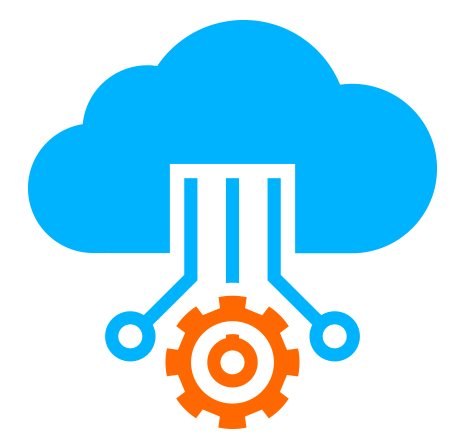 Server
Colocation
Server
Colocation
 CDN
Network
CDN
Network
 Linux Cloud
Hosting
Linux Cloud
Hosting
 VMware Public
Cloud
VMware Public
Cloud
 Multi-Cloud
Hosting
Multi-Cloud
Hosting
 Cloud
Server Hosting
Cloud
Server Hosting
 Kubernetes
Kubernetes
 API Gateway
API Gateway

Cloud migration has become more or less a crucial business imperative for organizations that seek to enhance flexibility, reduce costs, and optimize performance.
This guide will help you migrate all your current applications to the cloud without much disturbance and almost no operational interruption. Let’s get started!
Assess Your Current Infrastructure and Applications
Before diving into migration, take stock of your existing IT infrastructure and applications. This includes:
Cataloging all applications and their dependencies
Evaluating the complexity and criticality of each application
Identifying potential compatibility issues
Assessing current performance metrics and resource utilization
This initial assessment will help you prioritize which applications to migrate first and identify any potential challenges.
Define Your Cloud Migration Goals
Clearly outline what you hope to achieve through cloud migration. Common goals include:
Cost reduction
Improved scalability and flexibility
Enhanced performance and reliability
Better disaster recovery capabilities
Increased innovation potential
Having well-defined goals will guide your decision-making throughout the migration process.
Choose the Right Cloud Service Model
Select the cloud hosting service model that best fits your needs:
IaaS
PaaS
SaaS
Your choice will depend on factors such as the level of control you need, your in-house IT capabilities, and your specific application requirements.
Select a Cloud Service Provider
Research and compare significant cloud service providers. Consider factors like:
Service offerings and features
Pricing models
Geographic availability
Security and compliance certifications
Support and documentation
Choose a provider that aligns with your migration goals and offers the best fit for your applications.
Develop a Migration Strategy
Based on your assessment and goals, determine the most suitable migration strategy for each application:
- Rehosting (Lift and Shift): Move applications to the cloud without significant changes
- Replatforming: Make minor modifications to take advantage of cloud capabilities
- Refactoring: Redesign applications to be cloud-native
- Repurchasing: Switch to a cloud-based SaaS solution
- Retiring: Eliminate applications that are no longer needed
- Retaining: Keep specific applications on-premises if necessary
Plan Your Migration
Create a detailed migration plan that includes the following:
- Timeline and milestones
- Resource allocation (both human and technical)
- Budget considerations
- Risk assessment and mitigation strategies
- Testing and validation procedures
- Rollback plans in case of issues
Ensure all stakeholders are aligned on the plan before proceeding.
Prepare Your Applications and Data
Before migration, take steps to prepare your applications and data:
- Clean and organize your data
- Update and patch applications
- Resolve any known issues or bugs
- Ensure proper documentation is in place
- Set up necessary networking and security configurations in the cloud environment
Execute the Migration
Begin the actual migration process, following your chosen strategy for each application:
- Set up cloud infrastructure and environments
- Migrate data and applications according to your plan
- Configure necessary integrations and connections
- Implement security measures and access controls
- Monitor the process closely and be prepared to address any issues that arise.
Test and Validate
Thoroughly test all migrated applications to ensure they function correctly in the cloud environment:
Verify data integrity and completeness
Check application performance and responsiveness
Test integrations with other systems
Conduct user acceptance testing
Perform security and compliance audits
Address any issues or discrepancies before moving to production.
Optimize and Monitor
After successful migration, focus on optimizing your cloud setup:
- Fine-tune resource allocation and scaling
- Implement cloud-native features to enhance performance
- Set up monitoring and alerting systems
- Establish ongoing performance benchmarks
- Continuously evaluate and optimize costs
- Train Your Team and Update Processes
Ensure your team is prepared to work with the new cloud environment:
Provide training on cloud technologies and best practices
Update IT processes and procedures to align with cloud operations
Implement proper governance and compliance measures
Establish clear roles and responsibilities for cloud management
Decommission On-Premises Infrastructure
Once you're confident in your cloud setup:
- Gradually phase out on-premises infrastructure
- Ensure proper data disposal and hardware decommissioning
- Update documentation and asset management systems
That’s all! Businesses have found that migrating applications to the cloud is a challenging task, but it pays off in the long run. This knowledge base will help make the process easier and prepare your organization for the cloud age. Still have doubts? Get in touch with Cyfuture Cloud experts today!

Let’s talk about the future, and make it happen!
By continuing to use and navigate this website, you are agreeing to the use of cookies.
Find out more


